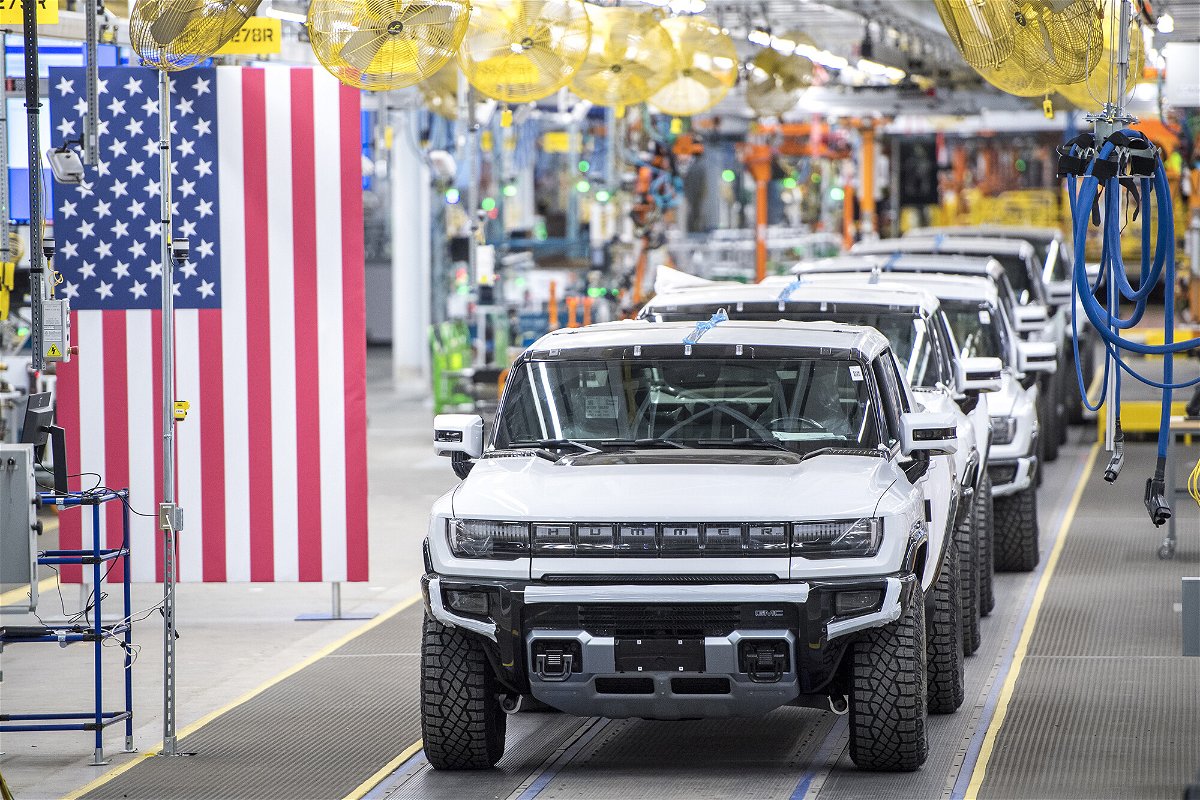The US is starting to make a manufacturing comeback. Here’s how to sustain it

American companies are starting to make positive moves. Intel recently announced it is creating a new $20 billion semiconductor manufacturing complex in Ohio
Opinion by Brian Deese for CNN Business Perspectives
The Covid-19 pandemic has laid bare the vulnerabilities in America’s domestic manufacturing base. The nation’s reliance on globally fragmented supply chains has led to shortages of everything from personal protective equipment to semiconductors to shipping containers. And these supply weaknesses have been a primary driver of elevated price increases.
In fact, one-third of the price increases in 2021 were due to higher vehicle-related prices, as global computer chip shortages constrained automakers’ ability to keep up with vehicle demand. Thankfully, though, American companies are starting to make positive moves. Intel recently announced it is creating a new $20 billion semiconductor manufacturing complex in Ohio. And General Motors just announced the company’s all-time largest investment, which will strengthen its ability to manufacture batteries and electric trucks. These announcements were more than just good news on jobs and supply. They marked a significant milestone in our nation’s economic and industrial renewal.
We need to sustain this momentum, and that means enacting legislation to put historic levels of funding behind strengthening our supply chains, accelerating research and development in critical technologies, rebuilding manufacturing capabilities across America, and driving greater equity in STEM research and education. Last year, the Senate passed its version with the United States Innovation and Competition Act (USICA), with broad bipartisan majorities, and this week, the House introduced its version with the America COMPETES Act. Getting a final version of this legislation to the President’s desk will not only bolster our economic and national security, it will give cities and towns across America the sense of dignity and pride that comes from being part of an American manufacturing comeback.
This comeback is long overdue. Sixty years ago, federal investments in basic research and deployment enabled new semiconductor technology to reach commercial viability. After this public-private effort invented the technology, the US private sector led in manufacturing, producing nearly 40% of global production into the early 1990s.
However, because of decades of underinvestment and a lack of prioritization of supply chain resilience by both the public and private sector, the US lost that edge. Last year, America’s share of global computer chip production was down to 12%. Equally worrying, our country produced none of the more advanced, leading-edge chips, while over 90% of them were produced in Taiwan.
This erosion creates serious national and economic security concerns, at a moment where our reliance on these chips is increasing. Demand for semiconductors was 17% higher in 2021 than 2019. By 2030, more than 20% of the components going into a car will be semiconductors, as the industry shifts to electric and connected vehicles — a five-fold increase from 2019.
These concerns fueled President Biden’s efforts to create a strategy to strengthen our manufacturing base. One month into office, he signed an executive order directing agencies to fortify our nation’s critical supply chains, including focused attention on semiconductors, advanced battery technologies and critical minerals. In June, he released a 100-day report outlining a strategy to address critical vulnerabilities, such as China’s 55% control of the world’s capacity for mining rare earth minerals. And the President convened business, labor, international allies and members of Congress from both parties to generate stronger coordination, transparency and strategic domestic investment.
The result has been an historic recovery for the manufacturing sector. US firms created 349,000 new manufacturing jobs in 2021 — the most in nearly 30 years. Businesses have committed nearly $80 billion in domestic semiconductor investments, alongside tens of billions in new investments — from new solar panel factories to advanced battery plants. With planned investments like these, our economy is positioned to sustain robust growth in our domestic manufacturing sector into the years ahead.
However, this won’t happen without a committed, domestic investment strategy for industrial resilience. That’s why Congress must pass competition legislation to catalyze investment in critical technologies, like semiconductors, and bolster our domestic research and development infrastructure to foster innovation hubs in regions across the country.
The-CNN-Wire
™ & © 2022 Cable News Network, Inc., a WarnerMedia Company. All rights reserved.